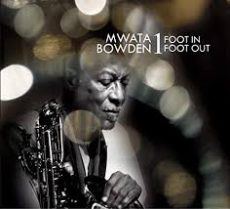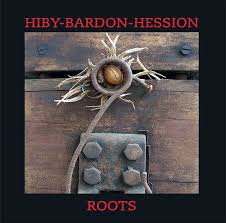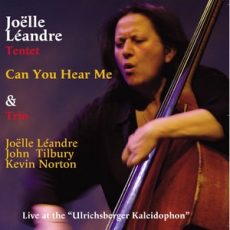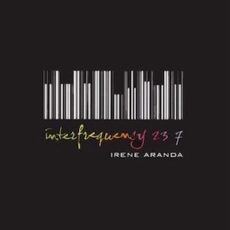
Daily Dose Of Jazz…
Pharoah Sanders was born Ferrell Lee Sanders on October 13, 1940 in Little Rock, Arkansas, an only child. He began his musical career accompanying church hymns on clarinet but his initial artistic accomplishments were in the visual arts. When he was at Scipio Jones High School in North Little Rock, he began playing the tenor saxophone.
After graduating from high school in 1959, Sanders moved to Oakland, California, where he lived with relatives. He briefly studied art and music at Oakland City College. He earned a Bachelor of Fine Arts from an unknown art institution.
He began his professional career playing tenor saxophone in Oakland, then moved to New York City in 1962. The following year he was playing with Billy Higgins and Don Cherry and caught the attention of Eric Dolphy and John Coltrane. In 1965, he became a member of Coltrane’s band, as the latter gravitated towards the avant-garde jazz of Albert Ayler, Sun Ra, and Cecil Taylor.
Sanders first recorded with Coltrane on Ascension, followed by their dual-tenor album Meditations, then joined Coltrane’s final quintet. Pharoah released his debut album as a leader, Pharoah’s First, was not what he expected. In 1966 he signed with Impulse! and the years Sanders spent with the label were both a commercial and critical success.
The 1970s had Sanders continuing to produce his own recordings including the 30-minute wave-on-wave of free jazz, The Creator Has A Master Plan from the album Karma, featuring vocalist Leon Thomas and to work with Alice Coltrane on her Journey in Satchidananda album. Although supported by African-American radio, Sanders’ brand of brave free jazz became less popular.
His major-label return came in 1995 when Verve Records released Message from Home, followed by Save Our Children (1998). But again, Sanders’s disgust with the recording business prompted him to leave the label. In the 2000s, a resurgence of interest in jazz kept Sanders playing festivals and was awarded a NEA Jazz Masters Fellowship for 2016 and was honored at a tribute concert in Washington DC on April 4, 2016.
In 2020 he recorded the album Promises, with the English electronic music producer Floating Points and the London Symphony Orchestra. It was widely acclaimed as a clear late-career masterpiece.
Saxophonist Pharoah Sanders, known for his overblowing, harmonic, and multiphonic techniques, died on September 24, 2022 at his home in Los Angeles at the age of 81.
More Posts: bandleader,history,instrumental,jazz,music,saxophone

Daily Dose Of Jazz…
Mwata Bowden was born on October 11, 1947 in Memphis, Tennessee. He is part of a group known as 8 Bold Souls and frequently engages in collaborations with Tatsu Aoki. He helped establish the Miyumi Project which was a blend of music with different ethnic backgrounds, highlighting contributions from Japanese taiko drumming in the framework of jazz music.
As part of his regular repertoire, Bowden plays a range of saxophones and clarinets, including the E-flat clarinet, B-flat clarinet, bass clarinet, contra-alto clarinet, and contrabass clarinet, as well as flute, zamada, and didgeridoo.
As an instructor in improvisational jazz at the University of Chicago teaches young aspiring musicians in the Chicago area. Saxophonist, clarinetist and flutist Mwata Bowden, who is a part of the Association for the Advancement of Creative Musicians, continues to perform.
More Posts: bandleader,clarinet,didgeridoo,flute,history,instrumental,jazz,music,saxophone,zamada

Daily Dose Of Jazz…
Paul Hession was born on September 19, 1956 in Leeds, West Yorkshire, England where his parents bought him a guitar when he was seven and encouraged his musical development by getting him in the church choir. His first paid gigs were weddings. He started playing drums around fourteen and was mainly self taught working himself through the different musical genres until he reached jazz.
After several years of playing jazz he turned to free improvisation and formed Art, Bart & Fargo with saxophonists Alan Wilkinson and Peter Malham. While living in London, England he played with numerous improvisers and formed a trio with Chris Green and Roberto Bellatalla. Returning to Leeds in the mid-Eighties he continued playing and running music workshops.
By the time he turned thirty he made a solo recording and tour and continued to play and record solo. He started working with electroacoustic dimensions as a soloist. Hession went on to run the Improvised Music Workshop in the late 1980s and a decade later founded Improvised Music Leeds, a workshop that was founded to teach drumming to youth.
Paul created his next trio, Hession/Wilkinson/Fell which became his most prolific group. They recorded for the Canadian Broadcasting Corporation and broadcast on the radio program Two New Hours. He toured the United States and parts of Canada before returning to Europe and playing several cities and festivals.
In 2018 he received his doctorate from the University of Leeds for research into augmenting solo percussion with analogue and digital electronics. Another trio later with Hans Peter Hilby and Michael Bardon, he remains active.
More Posts: bandleader,drums,history,instrumental,jazz,music

Daily Dose Of Jazz…
Joëlle Léandre was born September 12, 1951 in Aix-en-Provence, France on Opera Street across from a theatre. She studied the standard double-bass repertoire intensively in her hometown conservatory and at the Conservatoire National Superieur de Musique de Paris. By her late teens she was subbing in the bass sections of large classical ensembles. Drawn to Paris jazz clubs, she wasn’t involved in the scene because her pizzicato playing off-putting the jazz field’s standard.
Her appreciation of improvisation came from her chance discovery of Bowin’ Swingin’ Slam, by swing bassist Slam Stewart. Around the same time Joëlle received a one-year scholarship to study at the Center for Creative and Performing Arts in Buffalo, New York. Not only was she exposed daily to serious music from composers and travelled to New York to listen to improvisers.
She began her career in the early 1970s when she was still a student at the Conservatoire National Supérieur de Musique in Paris, France. She studied with renowned bassist Jean-Louis Rassinfosse and developed a unique style that fused avant-garde jazz with classical music. In 1974, she formed the ensemble Musica Elettronica Viva with Italian composer and electronic musician Luciano Berio.
Collaborating with many on the avant-garde jazz scene including John Cage, Anthony Braxton, Derek Bailey, Anthony Braxton, George E. Lewis, India Cooke, Steve Lacy, Sylvie Courvoisier, John Zorn and Cecil Taylor, among others. She is also a founding member of the improvising trio Fish Music with saxophonist Evan Parker and drummer Barry Guy. Aside from performing as a soloist, her bands have been trio, quartet configurations.
In 1983 she became a member of the European Women Improvising Group (EWIG), which evolved from the Feminist Improvising Group. In the early 1990s she co-founded the feminist improvising trio Les Diaboliques, with Irène Schweizer and Maggie Nicols.
Double bassist, vocalist, and composer Joëlle Léandre remains active in new music, avant~garde and free improvisation.
More Posts: bandleader,bass,composer,history,instrumental,jazz,music,vocals

Daily Dose Of Jazz…
Irene Aranda was born in Jaén, Andalucía, Spain on September 2, 1980 and started to play piano at age seven under the guidance of her maternal grandparents. She graduated from the Conservatory of Music in Granada and complimented her classical training by attending piano performance and composition classes with Gerardo López Laguna, Guillermo González, Fernando Puchol, Pilar Bilbao, Antonio J. Flores and Javier Darías, among the most notable.
She was self-taught in jazz and free improvisation, she later studied with Peter Zack, Eduard Simons, Chano Domínguez, Nikky Illes, Mike Ph. Mosman, Greg Hopkins, David Pastor, Jordi Farrés Tomás, Pete Churchill, Perico Sambeat, Tony Reedus, etc.
Her first work as a leader, Interfrequency 23 7, brought her great critical acclaim which led her to participate in numerous festivals. Since her debut release in 2007 she has released six more albums.
Freed from stereotypes, Irene has gone on to perform and collaborate with Paolo Fresu, Toots Thielemans, Maria Pia De Vito, Baldo Martínez and Bojan Z among others. Aranda has played with Don Malfon, Brandon López, Markus Breuss, Johannes Nästestjö, Samuel Blasser, Germán Díaz, Agustí Fernández, Joanna Mattrey, Lucía Martínez, Javier Carmona, Núria Andorrà, Marc Egea and numerous others.
Pianist, improviser, composer Irene Aranda continues to swim against the stream of pianists with her creativity and exploration in her music.
More Posts: bandleader,composer,history,improviser,instrumental,jazz,music,piano



